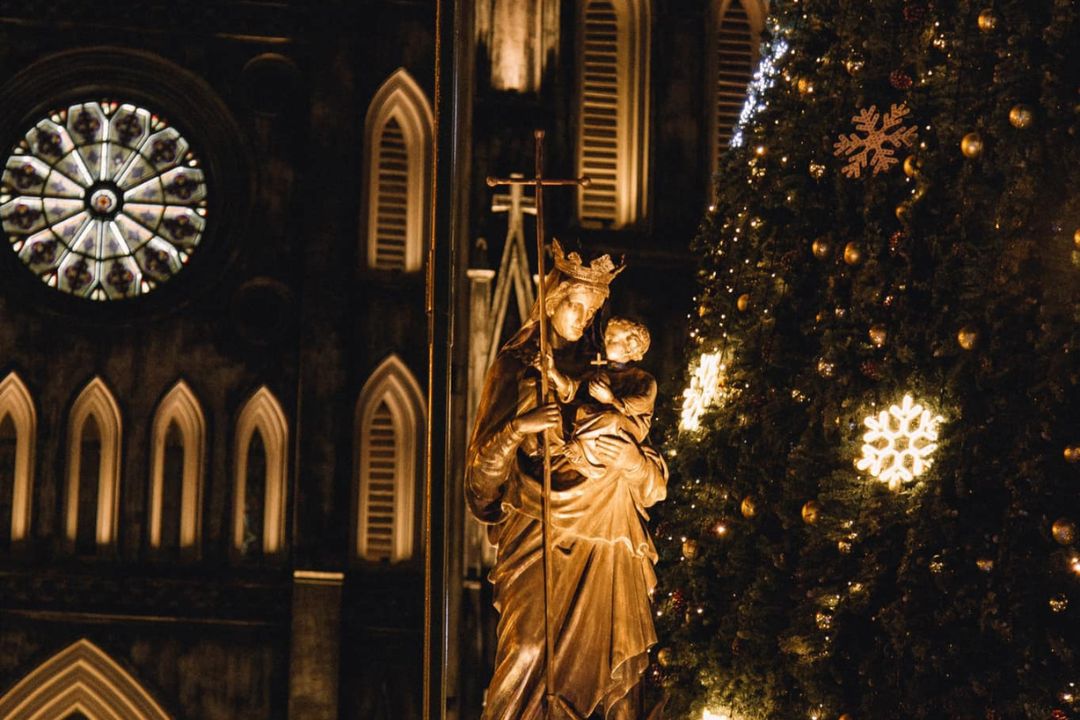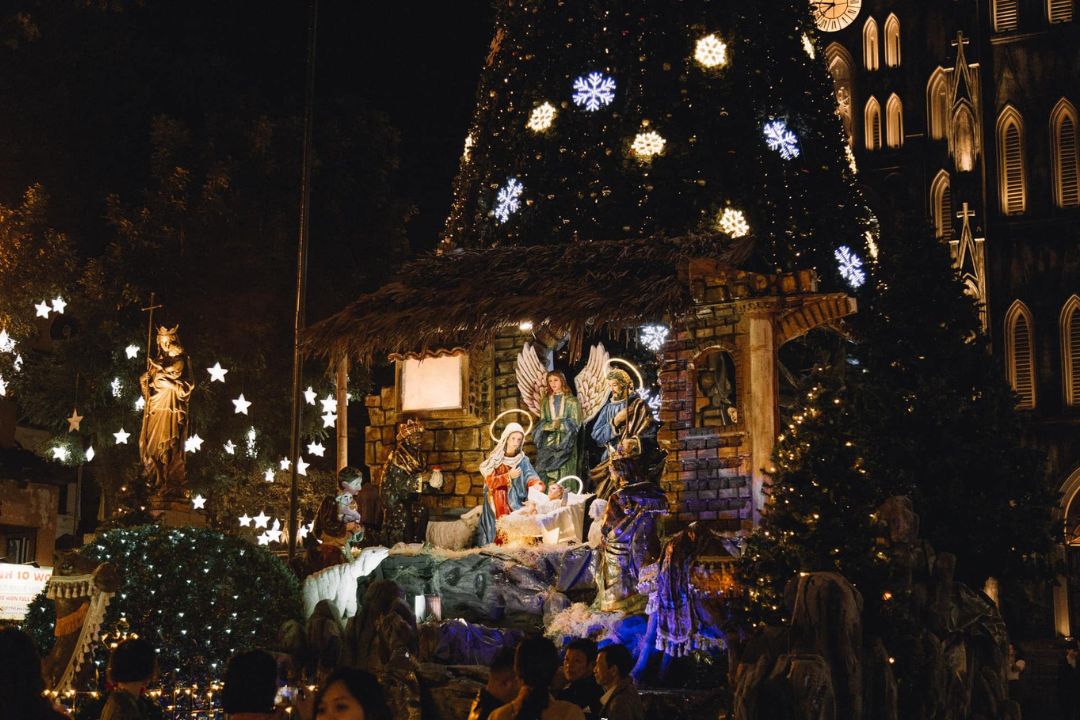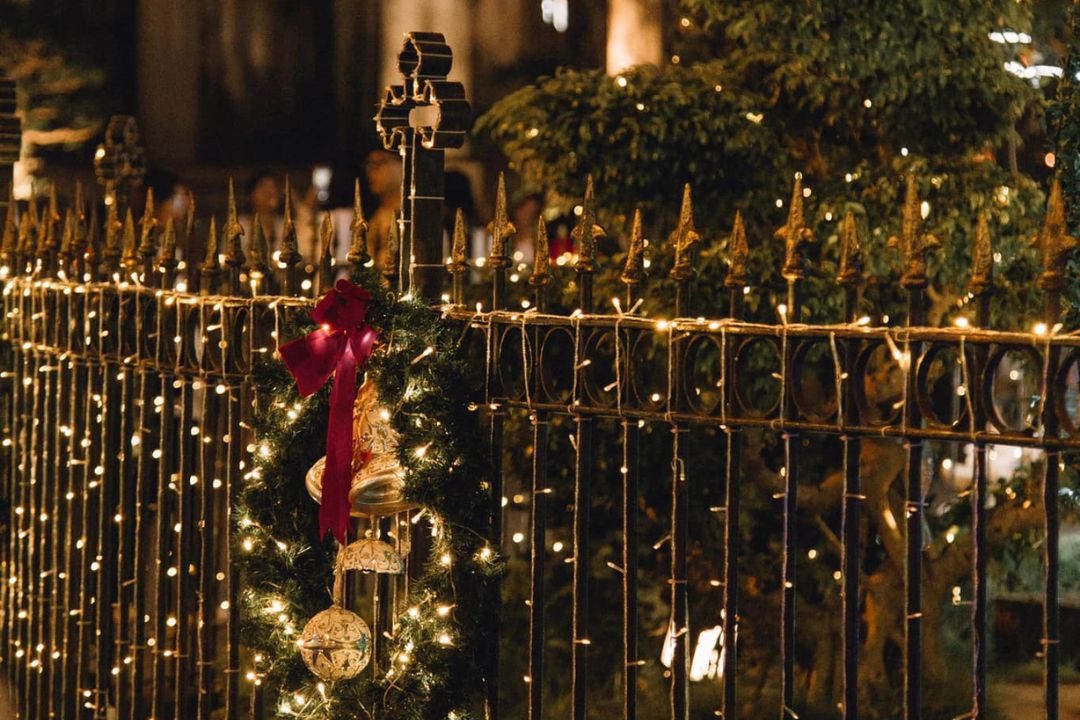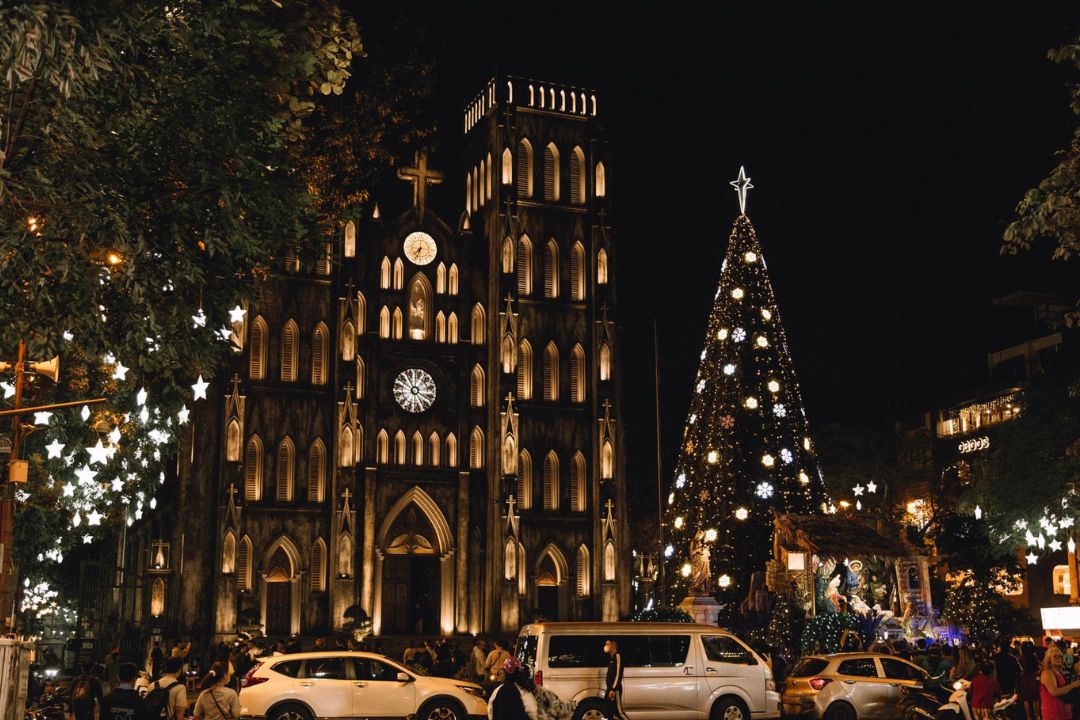In the list of seven renowned churches in Hanoi, as voted by some domestic and international newspapers, St. Joseph’s Cathedral consistently tops the charts. It is one of the oldest structures in the capital, retaining its noble and ancient charm, along with unique and iconic architectural features that once made it a symbol of Hanoi.
1/ History of St. Joseph’s Cathedral Hanoi
St. Joseph’s Cathedral, also known as the Big Church, was constructed in 1884 and officially inaugurated on Christmas Day in 1887. It stands as one of the first Western-style architectural structures in Hanoi. Over the years, the cathedral has borne witness to the capital’s transformations, serving as a silent witness across three centuries.

The original name of the cathedral is St. Joseph’s Church, named after Saint Joseph, the patron saint of Vietnam and neighboring countries, as proclaimed by Pope Innocent XI. Hence, this grand cathedral is honored as the “St. Joseph’s Grand Cathedral” and serves as the Main Cathedral of the Archdiocese of Hanoi.
2/ Architecture of St. Joseph’s Cathedral Hanoi
St. Joseph’s Cathedral is an architectural marvel that captivates any visitor to Hanoi due to its uniqueness and allure. The cathedral is designed in the Gothic architectural style of medieval Europe (popular in the 12th century and during the Renaissance), resembling the Notre-Dame Cathedral in Paris with its arched vaults reaching towards the sky.
The primary construction materials include fired bricks and walls coated with plaster made from paper pulp. The cathedral spans 64.5 meters in length, 20.5 meters in width, and is adorned with two bell towers standing 31.5 meters tall, each supported by large stone pillars at the corners. At the summit rests a stone crucifix.

Externally, the cathedral exudes an ancient appearance with weathered lime layers and visible moss, bearing the marks of three centuries. However, upon stepping through the large entrance doors, visitors are astonished by the grand and immaculate architectural features that have gracefully stood the test of time.
Inside the cathedral, a large door and two smaller doors on either side of the towers lead to the main hall. All doors and windows have pointed arches, complemented by stained glass paintings that harmoniously create a mystical natural light inside the cathedral. The unique touch lies in the Folk Art decorated Holy Area, adorned with intricately carved wooden motifs coated in delicate gold leaf. In the main section stands a 2-meter-high statue of Saint Joseph made from fired clay.
The cathedral houses a set of Western bells, comprising four small bells and one large bell. Particularly noteworthy is the large clock mounted on the front facade, equipped with engravings, timekeeping, and a bell system linked to five hanging bells on the towers. The main hall inside has around 30 neatly arranged wooden benches. On weekdays, there are two masses, while Sundays witness seven.
3/ St. Joseph’s Cathedral Hanoi – a Familiar Check-In Spot Every Christmas
Adding to the special allure that draws tourists to St. Joseph’s Cathedral is its association with Hanoi’s “specialty” – the “Church Iced Tea.” The area around the church has become a familiar spot for Hanoi’s youth. With just a glass of iced tea, looking towards the cathedral, visitors can enjoy a relaxing and pleasant atmosphere in the “unique” space of the capital. Accompanying this is the opportunity to savor famous Hanoi street foods such as stick cheese, grilled sour fermented pork roll, and more.

The surrounding space of the cathedral is enveloped by ancient French-style buildings, making it an ideal location for wedding photoshoots for couples seeking to capture important moments in their lives. To this day, it remains not only the focal point of Catholic activities in Hanoi and surrounding areas but also an indispensable destination in the journey of every tourist visiting the thousand-year-old cultural capital.
